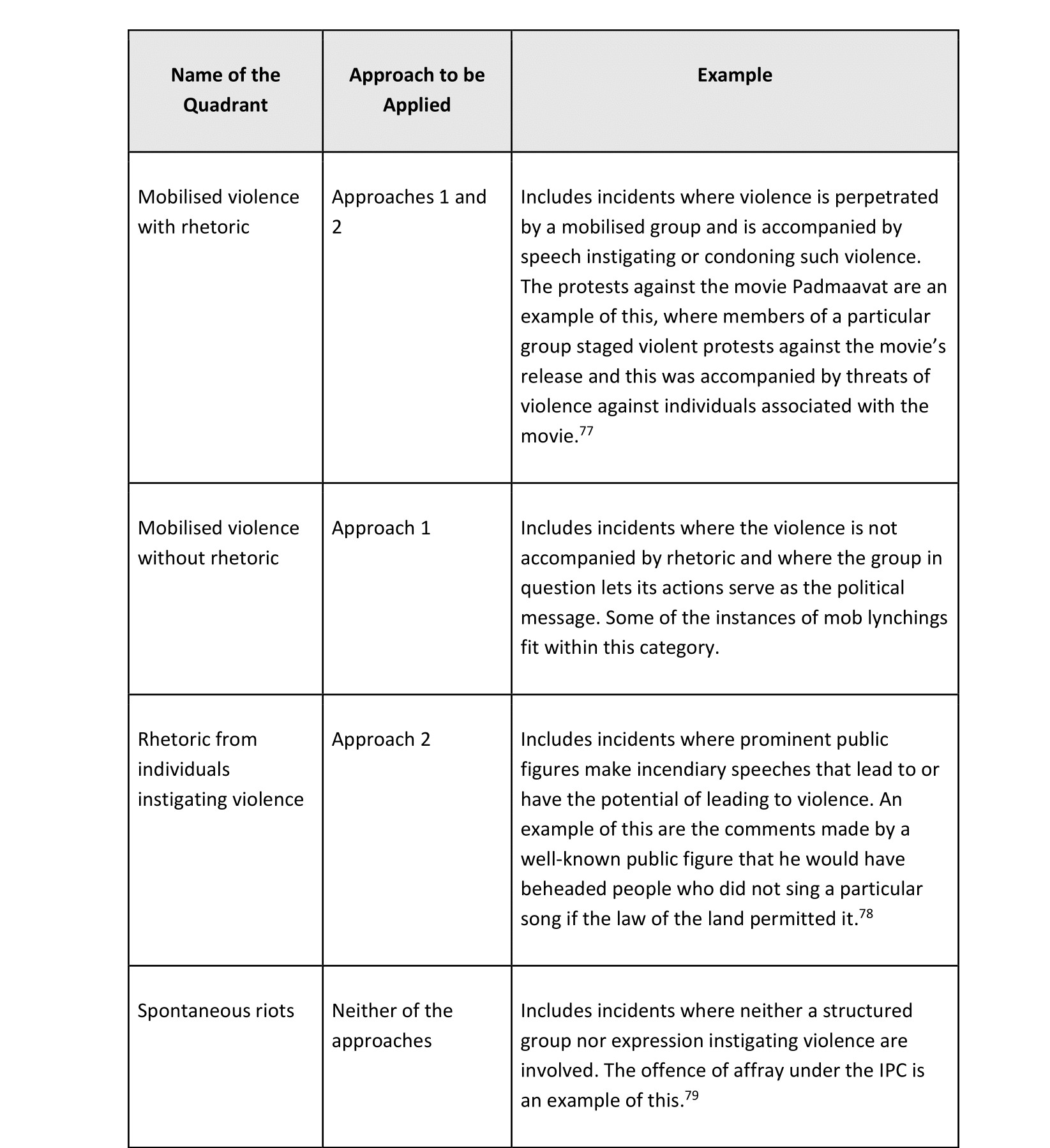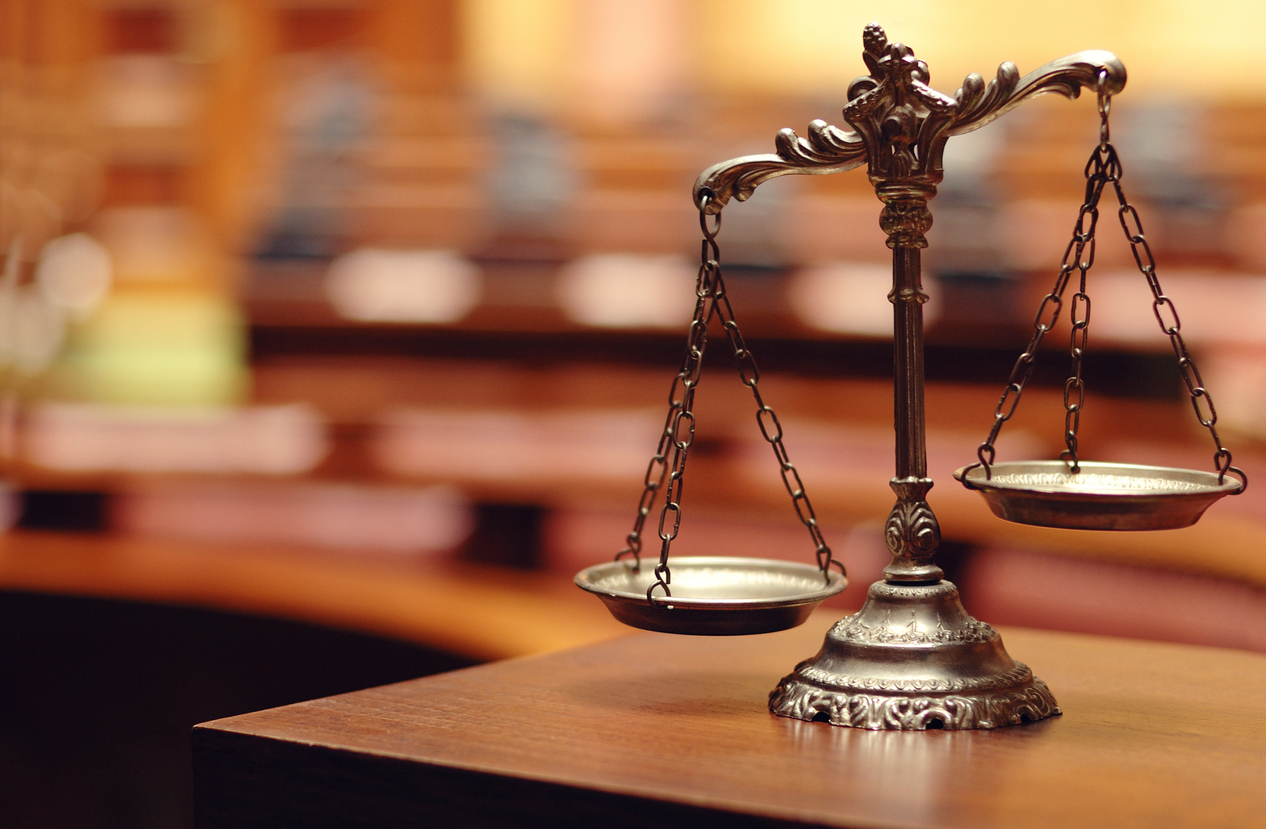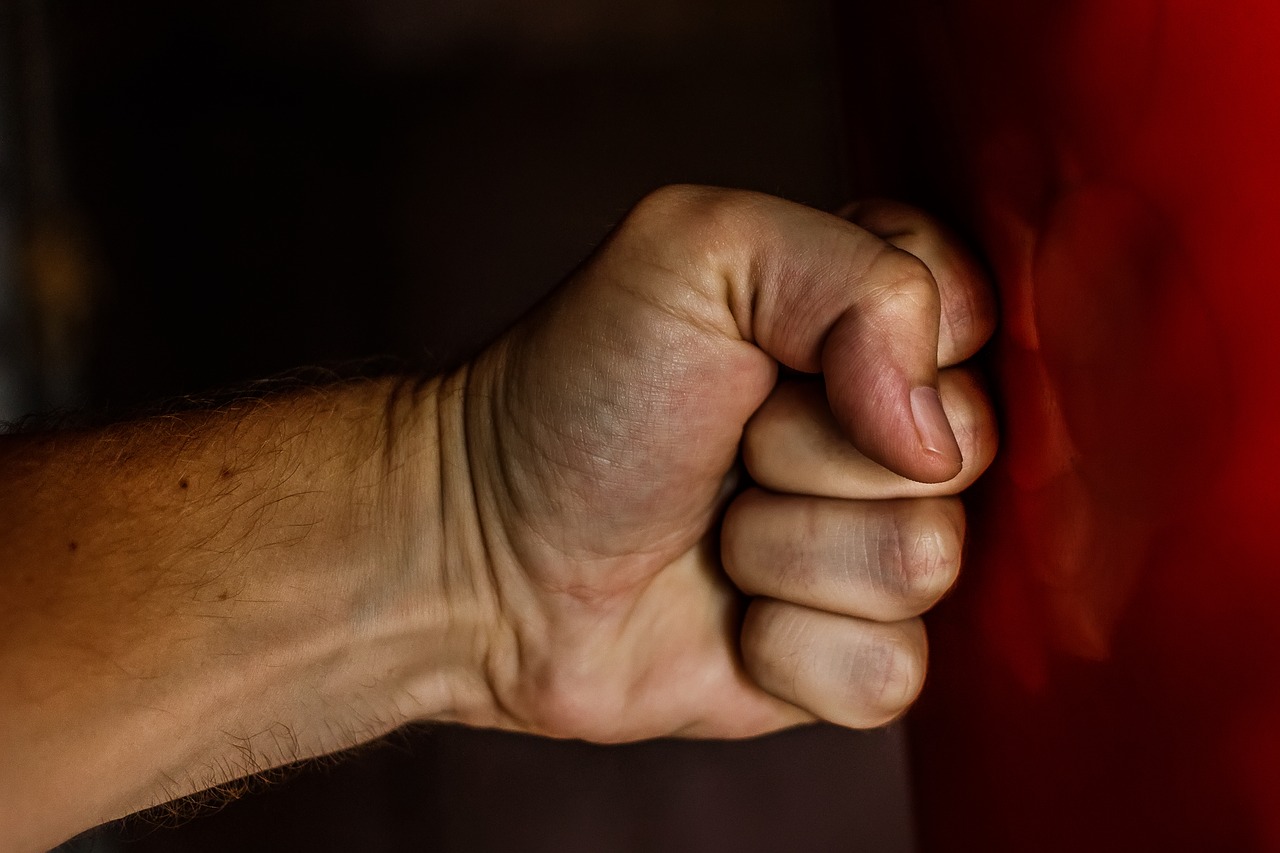
A Framework for Countering Mobilised Violence
Need for regulating groups with a history of engaging in violence, and for reframing hate speech under the Indian Penal Code
Summary: The Report analyses mobilized violence in Karnataka, its social, economic and political implications, and the laws or the lack there of in adequately targeting perpetrators of mob violence.
India has seen a spate of incidents of mobilised violence in recent years and existing legal measures have proved insufficient in addressing the problem. The current legal framework is inadequate and focuses largely on individual perpetrators of violence while ignoring the larger political ecosystem of organisations and leaders responsible for supporting and encouraging such violence.
While some laws aim to address mobilised violence by imposing restrictions on hate speech and on the formation of associations or assemblies, they are insufficient, and the discretion conferred by these laws to the State for this is extremely wide and prone to abuse.
Vidhi’s report ‘A Framework for Countering Mobilised Violence’, in collaboration with the Takshashila Institution, analyses the economic costs of collective violence, assesses the current legal framework and suggests reforms to the current approaches towards mobilised violence, including creating a framework for liability of organisations and their leadership; reforming hate speech provisions under the Indian Penal Code (IPC) and addressing institutional deficiencies in tackling mobilised violence.
What is mobilised violence?
This report uses the term ‘mobilised violence’ instead of the common term ‘mob violence’ to highlight the premeditation involved in the instances of violence sought to be targeted.
‘Mobilised violence’ refers to violence perpetrated by multiple people under the aegis of a group, where the purpose of the violence is to achieve an identified political objective. The defining features of mobilised violence are thus two-fold:
1. The acts of violence are committed by persons who identify as being part of a group (whether such group has a permanent or temporary identity).
2. The violence is intended to achieve a political purpose. The word ‘political’ is used broadly and ‘political purpose’ in this context refers to the aim of the group to influence the exercise of lawful rights and obligations by State authorities and private parties. This may be related to issues of linguistic identity, religion, regional sharing of resources, cultural practices, etc.
Costs of mobilised violence
There are high costs of mobilised violence including the loss of life, damage to public and private property, cessation of economic activity, and the reputational cost to a region. The report attempts to enumerate and quantify such costs to demonstrate the scale and magnitude of the problem posed by mobilised violence.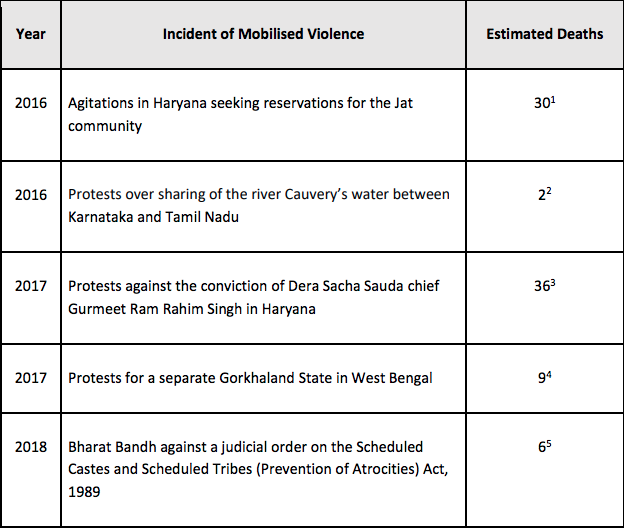
When public property is damaged, taxpayers often bear the cost. Even if damage to shops and vehicles is covered by insurance, it covers only the cost of physical repairs and does not compensate owners for any loss of revenue. The approximate losses in the event of economic activity ceasing for one day has been calculated below on the basis of the Gross Domestic Product (GDP) for India and the Gross State Domestic Product (GSDP) for the states, based on an assumption that the disruption caused leads to a loss amounting to roughly 40% of the GDP or GSDP for a day.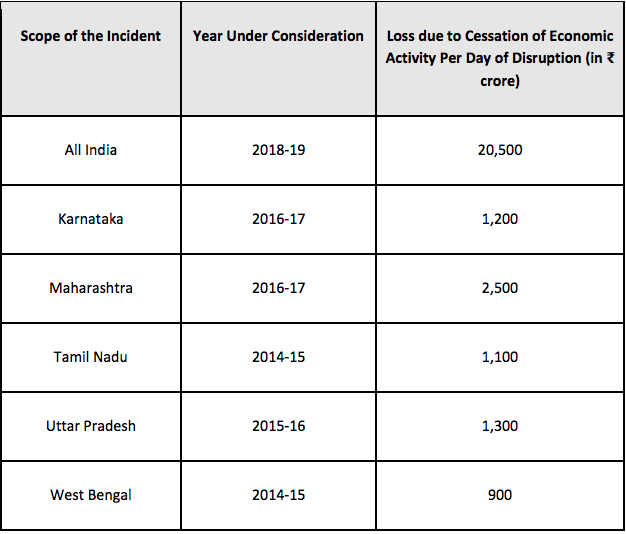
Recommendations
The report calls for an innovative shift in the way mobilised violence is addressed and makes recommendations to improve the legal framework both through tweaks to existing laws as well as new legal approaches. It focuses on the principle of ensuring the gaze of law is widened beyond the low-level enforcers to the people and organisations responsible for instigating and fostering mobilised violence.
The report also suggests wide-ranging reforms to the legal system. These include:
1. Reforming ideas of collective responsibility and group liability for violent actions
2. Reframing laws around hate speech and incitement
3. Revising evidentiary standards and substantive offences to target leaders
4. Increasing State capacity to gather, disseminate and analyse data on mobilised violence
5. Facilitating the creation of special public prosecutors for cases of mobilised violence
6. Reducing executive interference in prosecution of offences
Proposed Approaches
Approach 1: Assigning Liability to Groups Engaging in Mobilised Violence
This approach seeks to regulate groups with a history of engaging in mobilised violence and seeks to impose costs on groups and their leadership to deter future instances of mobilised violence, while ensuring that membership of a group itself is not criminalised.
It involves:
• Passage of a law regulating groups that have a documented history of mobilised violence, while including procedural safeguards that ensure the law is applied only in relevant cases.
• Introduction of civil penalties against groups that engage in mobilised violence, to ensure that victims of mobilised violence can seek reparations and also provide a tangible financial deterrent against engaging in future acts of mobilised violence.
• Criminalisation of militia training and arms drilling with narrowly defined exceptions. This accounts for the fact that incidents of mobilised violence are often preceded by groups facilitating the training of individuals in the use of arms.
• Amendment of certain procedural and evidentiary standards that aid law enforcement to better target groups that engage in mobilised violence.
Approach 2: Refining the IPC’s Position on Hate Speech
This approach is intended to deter the use of hate speech by individuals to incite violence. It calls for the introduction of narrowly tailored provisions in the IPC, 1860 that penalise incitement or provocation of violence, accompanied by a repeal of certain existing provisions that are overly broad in scope and prone to abuse.
Application Framework
While the approaches 1 and 2 (A1, A2) outline two solutions for addressing mobilised violence, they do not by themselves offer guidance on their application. The report creates a framework to understand that mobilised violence is not
homogenous and can occur in a variety of factual scenarios because of the existence of the following factors:
• Structured grouping – where the violence being perpetrated is the deliberate act of an organised group.
• Expression instigating violence – where the violence is instigated by speech
made in public.